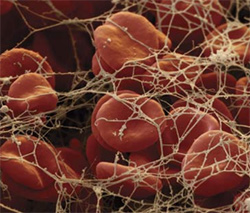
The findings are based on a study of 3601 women, between 45 and 84 years of age.
Except for women older than 79 years and those with diabetes, 90 percent were considered to be at low risk for heart disease, based on the standard risk score, which includes things like a person’s age, cholesterol and blood pressure levels, smoking habits and diabetes.
However, 32 percent of “low-risk” women had calcium deposits in their coronary arteries, reported Dr. Susan G. Lakoski and colleagues from Wake Forest School of Medicine in Winston-Salem, North Carolina.
Over an average of 3.75 years, 24 of the low-risk women had heart events (such as heart attack and heart pain) and 34 had a cardiovascular disease event, including heart events, stroke or death.
According to Lakoski and colleagues, in “low risk” women, the presence of coronary artery calcium, as seen on CT scans, increased the odds of heart disease and heart-disease events by 6.5- and 5.2-fold, respectively, over the course of the study.
Advanced coronary artery calcium identified women with an especially high risk of heart-related events.
“The study findings raise the important question whether coronary artery calcium screening is warranted among at least some women who are currently classified as ‘low risk’,” two heart doctors note in a written editorial on the study.
At this point, however, there is not enough evidence to support coronary artery calcium screening in low-risk women and they call for further studies to better identify who would benefit from such screening.
